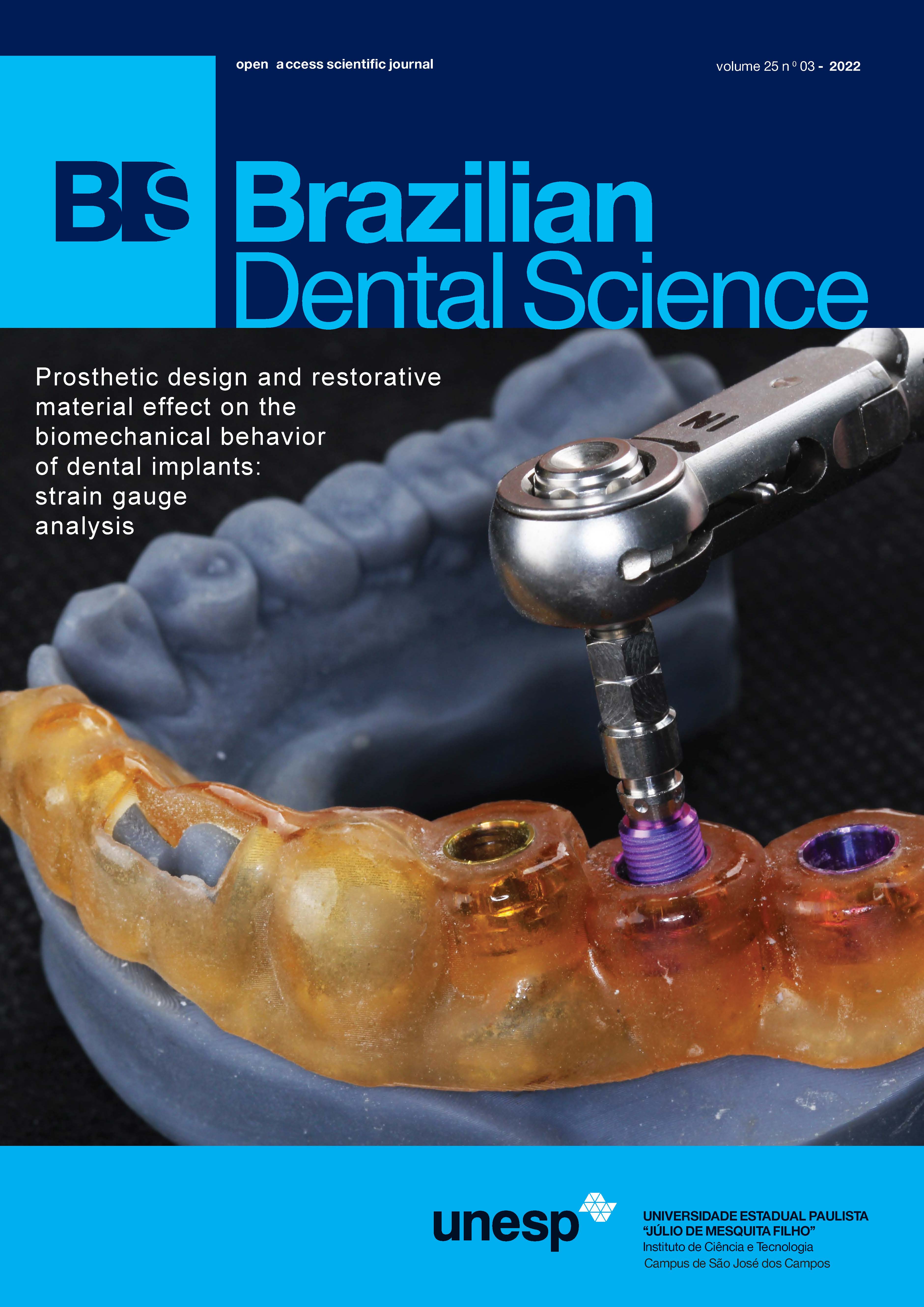Influence of different separating mediums applied on the immediate dentin sealing in the tensile strength of temporary restorations
DOI:
https://doi.org/10.4322/bds.2022.e3139Resumo
Objective: To evaluate the ability of different separating mediums to prevent adhesion between provisional
restorations and hybridized dentin surfaces when used with the Immediate Dentin Sealing technique (IDS).
Material and Methods: 120 extracted human teeth — 40 premolars and 80 molars — were selected to integrate
acrylics samples separated into 4 different groups (n=10) according to the separating medium used for IDS
protection. Forty samples were made of three teeth mounted in a self-cure acrylic resin block (Jet, Classic, São
Paulo, Brazil) arranged side by side, simulating the positioning and proximal contacts present in the dental arch
between the second premolar, first molar and second molar. A standard dental preparation for ultra-thin occlusal
veneer was performed and complete occlusal dentin exposure was achieved by selective removal of the occlusal
enamel with a high-speed conical round burr (Code: 1801.4138 FG, KG Sorensen, Medical Burs Ind. e Com. de
Pontas e Brocas Cirúrgicas Ltda, São Paulo, Brazil). Dentin hybridization were performed on the control group
and 3 different groups of separating mediums (n=10): PC—commercial provisional separating agent (Pro-V
Coat, Bisco, Schaumburg, USA); GG—glycerin gel (K-Y Gel; Johnson & Johnson Industry and Commerce LTDA,
São Paulo, Brazil); PJ—petroleum jelly (Rioquímica, São Paulo, Brazil). Provisionalization were manufactured
on the prepared teeth. After 2 weeks, the tensile test was performed, and the analysis of the failure pattern was
performed by 3D laser confocal microscopy and Scanning Electron Microscopy (SEM). The data were analyzed
with the 1-way ANOVA and the Tukey test (a = 0.05). Results: Significantly lower tensile strength values were
found for the commercial provisional separating agent (30.39 ± 10.01 N) compared to others (p < 0.05).
Conclusion: The commercial provisional separating agent showed greater effectiveness on protecting hybridized
dentin against the provisional restorations.
KEYWORDS
Dental bonding agent; Dental restoration temporary; Immediate dentin sealing.
Downloads
Downloads
Publicado
Como Citar
Edição
Seção
Licença
TRANSFERÊNCIA DE DIREITOS AUTORAIS E DECLARAÇÃO DE RESPONSABILIDADE
Toda a propriedade de direitos autorais do artigo "____________________________________________________________________" é transferido do autor(es) para a CIÊNCIA ODONTOLÓGICA BRASILEIRA, no caso do trabalho ser publicado. O artigo não foi publicado em outro lugar e não foi submetido simultaneamente para publicação em outra revista.
Vimos por meio deste, atestar que trabalho é original e não apresenta dados manipulados, fraude ou plágio. Fizemos contribuição científica significativa para o estudo e estamos cientes dos dados apresentados e de acordo com a versão final do artigo. Assumimos total responsabilidade pelos aspectos éticos do estudo.
Este texto deve ser impresso e assinado por todos os autores. A versão digitalizada deverá ser apresentada como arquivo suplementar durante o processo de submissão.




























